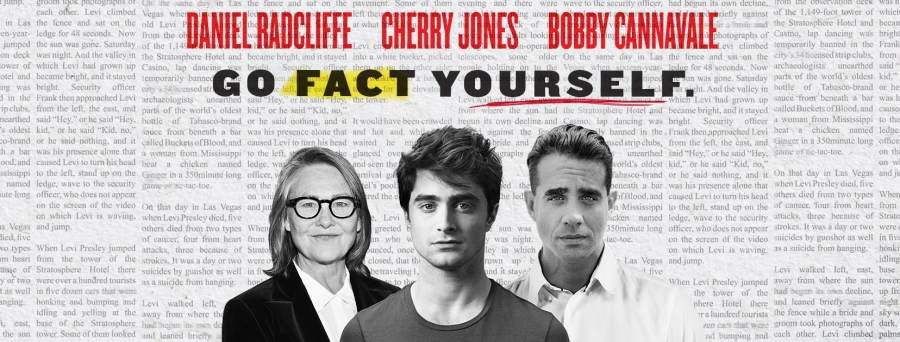

People believe anything they see, in reputable publications and even on Wikipedia. They accept every number, name and fact as truth. This places a great deal of responsibility on the media and can be taken seriously or merely ignored. Such is the situation in “Lifespan of A Fact” by Jeremy Karen, David Murrell and Gordon Farrell at Studio 54. Based upon the eponymous Essay/Book by John D’Agata and Jim Fingal, the play deals with fact versus truth. The talented Bobby Cannavale in one of his best performances to date portrays John D’Agata, a writer, who has written a brilliant essay (“Don’t call it an article) about a young man who commits suicide in Las Vegas.
Daniel Radcliffe plays Jim Fingal, a young employee who is assigned to fact-check the piece. The 15-page work is slated to run in the next issue of a prestigious news magazine whose editor, Emily, feels that the essay will be her legacy. She is more concerned about getting the job done on time than having it done thoroughly. The important thing to her is the deadline. Talented Cherry Jones plays Emily, measured and judicious, especially as she navigates between her young fact checker and her temperamental writer who has been known for “bending the truth.”
Jim is so anxious to impress Emily that he creates a 130-page spreadsheet. He makes calls and even visits the places and places in Las Vegas that are mentioned in the essay. Jim questions everything, but John pushes back, having altered minor facts (brown becomes red, three becomes four) for the flow of the essay. He justifies his changes, noting “I’m not beholden to events and details.” He explains that he is more concerned about nuance and rhythm than accuracy.
The three actors in the cast are excellent. Daniel Radcliffe (“Cripple of Inishmaan,” “Equus,” etc ) has come a long way from his days as Harry Potter, the “ Boy Who Lived.” His eclectic theatrical choices display his versatility and range. As Jim, he is annoyingly persistent and almost manic, speaking quite rapidly. As the writer John, Cannavale is moody, temperamental, and irascible. At first, his 6’2’’ height compared to Radcliffe’s 5’’5’ suggests an uneven power struggle. Yet as the show continues and Jim raises valid points, the height difference seems less significant.
Jones is strong, self-confident and maternal as she attempts to calm her creative writer down. (At one point, Jim even refers to her as “mother.”) She’s the calm negotiator between the two. At first she sees fact-checking as a mere formality, but she later begins to pay closer attention to Jim’s corrections.
Directed by Leigh Silverman, the play is based upon a true story about the interaction of writer John D’Agata and fact-checker Jim Fingal. D’Agata’s 2003 essay “What Happens Here” (or it might have been 2005-sources disagree) and Fingal’s fact-checked notes were combined into a book published in 2012. “Lifespan of a Fact” is beautifully written and superbly acted, and it is one of the best plays this season.
What is more important - the flow of the narrative or the accuracy of the facts? For D’Agata, it is more important to deliver the message in as effective a method as possible, even if it means altering the facts for effect. John notes, “I’m not interest in accuracy. I’m interested in truth.” Is there creative license in writing non-fiction?
After watching the two characters wrestle with the language and truthfulness of the essay, one might wonder how accurate the facts depicted in this play actually are. Is this exactly how it happened? But, then again, as the character asks - does that really matter?
Limited engagement on Broadway.